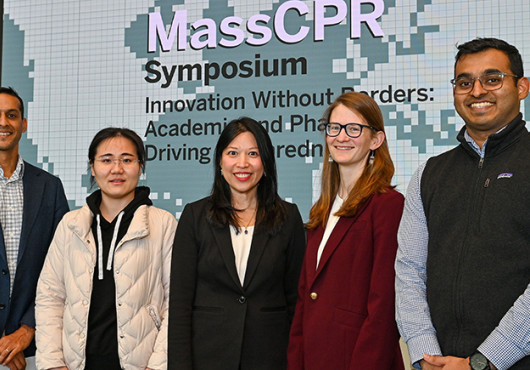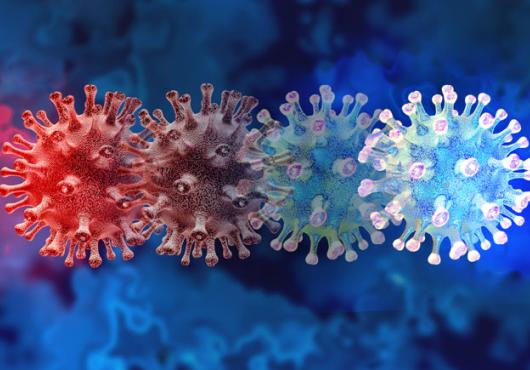
This article is part of Harvard Medical School’s continuing coverage of medicine, biomedical research, medical education, and policy related to the SARS-CoV-2 pandemic and the disease COVID-19.
When the inaugural Global Health Security Index was released in October 2019, the United States was named the best-prepared nation in the world to deal with a health emergency like an outbreak of epidemic disease.
Fast forward to March 2021, and the U.S. had claimed the top spot on a very different rank list— as the country with the most COVID-19 cases and the most COVID-19 deaths in the world.
More than a year into the pandemic, the U.S. has tallied more than 540,000 deaths and more than 30 million confirmed cases, according to the latest count from the World Health Organization.
“When we think about how to balance control of an epidemic over chaos, we have to double down on care and concern for the people and communities who are hardest hit,” said Joia Mukherjee, associate professor of global health and social medicine in the Blavatnik Institute at Harvard Medical School and chief medical officer at Partners In Health, an organization focused on strengthening community-based health care delivery.
“In the U.S., we have the building blocks of a health system, but without trust and leadership and engagement and care, we don’t really have a system,” she said.
The problem with the index was that it underestimated the importance of several elements that are necessary for real health security, Mukherjee said, including a coherent, integrated system that can help people meet their needs for clinical care while providing clear messaging and social support to make preventive public health efforts effective and sustainable.
Mukherjee is part of a cadre of HMS community members who have taken a leadership role in building a more comprehensive response to the outbreak in Massachusetts and around the U.S. They are drawing on their combined decades of experience building integrated health systems, researching the results, and training generations of global health care workers to fight outbreaks and endemic disease around the world in the fight against the coronavirus.
To contain an infectious disease epidemic, Mukherjee says the following elements are crucial: Making sure that the people who need testing can get tested, that those who need to be isolated have the resources they need to do so, and that those who need treatment have access to clinical care. More broadly, widespread community consensus on the best way to stop the spread of the disease must be ensured.
These aren’t just idealistic goals. They’re pragmatic, essential elements of a functioning health care system during an outbreak, Mukherjee said.
“If you don’t provide community engagement and material support, you can’t really have a pandemic response that’s successful,” Mukherjee said.
Community-level strategies and old-school public health approaches can’t be replaced with technological advances like smart phone apps or biomedical breakthroughs like the new vaccines. Continued vigilance, including personal contact and human interaction with those who are infected or at risk remain critical.
Even as more and more Americans receive vaccines, public health experts emphasize that controlling the pandemic by limiting infections will remain vital for the foreseeable future.
Indeed, slowing the spread of the disease will be crucial for preventing the natural evolution of more dangerous variants that could potentially evade both immune defenses developed from natural infection and limit the effectiveness of immune protection from the current generation of vaccines.
Making crucial connections
During disease outbreaks in low-resource settings, the consensus has often been that treatment is too complicated or too expensive, said Paul Farmer, the Kolokotrones University Professor of Global Health and Social Medicine at Harvard and chair of the HMS Department of Global Health and Social Medicine.
The phenomenon, Farmer said, is called treatment nihilism. In these cases, most of the energy and resources available for health care are devoted to prevention and public health efforts.
A mirror image of the same conflict has played out here in the U.S., he said. The country has resources dedicated to increasing hospital capacity and is developing therapeutics and vaccines, but many experts have said prevention and containment are impossible—a form of containment nihilism.
All of these—prevention and infection containment, hospital-based care, therapies, vaccines—are by themselves clearly necessary elements for a pandemic response to a disease like COVID-19, Farmer said, but they cannot work in isolation. The best approach is to integrate prevention, clinical care, and social supports in a single, comprehensive plan.
Farmer is one of the founders of Partners In Health, and over the years, he and his colleagues from HMS and PIH have fought epidemics of HIV, Ebola, cholera, tuberculosis, and a host of other infectious and noninfectious diseases, repeatedly seeing the importance of integrated care and community trust in achieving results that skeptics doubted were possible.
Since last April, PIH has used its international experience to help build a more integrated response to COVID-19 in the U.S. in the hopes of building the foundations for a long-term shift toward a more care-centered, community-based health care system.
The process began with the launch of the Massachusetts Community Tracing Collaborative (CTC), a statewide contact tracing initiative made possible through a partnership among several state bodies, local boards of health, and PIH. The CTC was launched in April 2020 by Governor Charlie Baker, with leadership from HMS faculty.
At its simplest, contact tracing is about reaching out to people who have tested positive for an infectious pathogen, such as a virus or a bacterium, finding out who else they have been in close contact with, and then reaching out to those close contacts to screen for symptoms and encourage those at risk of infection to seek testing or to quarantine themselves, as necessary.
During the initial wave of the COVID-19 outbreak in spring 2020, the CTC team included care coordinators and contact tracers who spoke 23 languages, including nurses, social workers, public health practitioners, and staff members from local health agencies with deep connections to the communities they were serving. The CTC’s tracers provided backup for overwhelmed local public health agencies, working with 339 of the state’s 351 municipalities. Some cities and towns relied on CTC backup only occasionally. Yet, in especially hard-hit and under-resourced communities, such as New Bedford, CTC staff did up to 80 percent of the contact tracing needed in the community, according to published reports.
Putting COVID-19 in context
Based on decades of experience supporting people living with some of the deadliest endemic and epidemic diseases in places like Rwanda, Haiti, Peru, and Mexico, the team knew that the most vulnerable people in an outbreak are often those who don’t have the capacity to safely isolate or follow other public health recommendations due to their social and economic status.
Contact tracers reported that in addition to the obvious medical questions that people have when they learn they are infected or are at risk of infection from SARS-CoV-2—like where to get tested and when to seek a doctor’s care—many had other concerns.
Knowing they may have to go without work for two weeks, some feared eviction and possible homelessness. Some newly arrived immigrants without family or friends in the community worried about how they could get simple household products like soap, cleaning supplies, or baby formula.
During the first three months that the CTC was in operation, they received more than 7,000 requests for assistance for social support. While the contact tracing collaborative was unable to fill all of these needs with its own resources, contact tracers and resource specialists worked to connect individuals with the resources they needed.
“COVID is a misery-seeking missile that has targeted the most vulnerable,” Farmer said.
People facing the possibility of infection are concerned about lacking household items, access to help with childcare, and support for their basic housing and food needs—these realities underscore the crucial importance of basic social care and community support in fighting the pandemic. To slow down the spread of infection and reopen society we need to meet these needs, Farmer said.
“What kinds of help are people asking for?” Farmer said. “It’s important to listen to what your patients are telling you.”
An outbreak of care
As soon as PIH helped launch the Massachusetts CTC, the organization began to receive requests from cities, states, and community organizations around the country to help set up contact tracing operations. To meet that need, the organization announced the launch of a U.S. public health accompaniment unit on May 13, 2020.
The unit has embedded team members in nearly two dozen state and municipal departments of health across the country who are working in collaboration with local community-based organizations. PIH provides technical advice on things such as choosing and implementing the best software and other tools for contact tracing. To share new insights more quickly, they established a learning collaborative with more than 200 members from more than 100 organizations. They also work to advocate for a stronger, more equitable public health response to meet the needs of vulnerable populations.
The PIH public health unit helped train contact tracers in the Navajo nation and worked to strengthen coordination between COVID-19 testing, prevention efforts, clinical care delivery, and social services in vulnerable populations around the country.
For example, they helped forge a stronger working relationship between the Coalition of Immokalee Workers and state and local public health officials in central Florida. In the early days of the pandemic, there were no resources for testing migrant farm workers. When the first round of testing began in Immokalee, 42 percent were positive, Mukherjee said. Left unchecked, this reservoir of infection could have made the already dire outcomes of the pandemic even more catastrophic, she said, noting that an important part of prevention is knowing where, how, and in whom the disease is spreading so that resources can be put proportionately where they are needed the most. Contact tracing makes that possible, she said.
“For us to reopen our schools, our churches, our workplaces,” Mukherjee said, “we have to know where the virus is spreading so that we don’t just continue on this path.”





